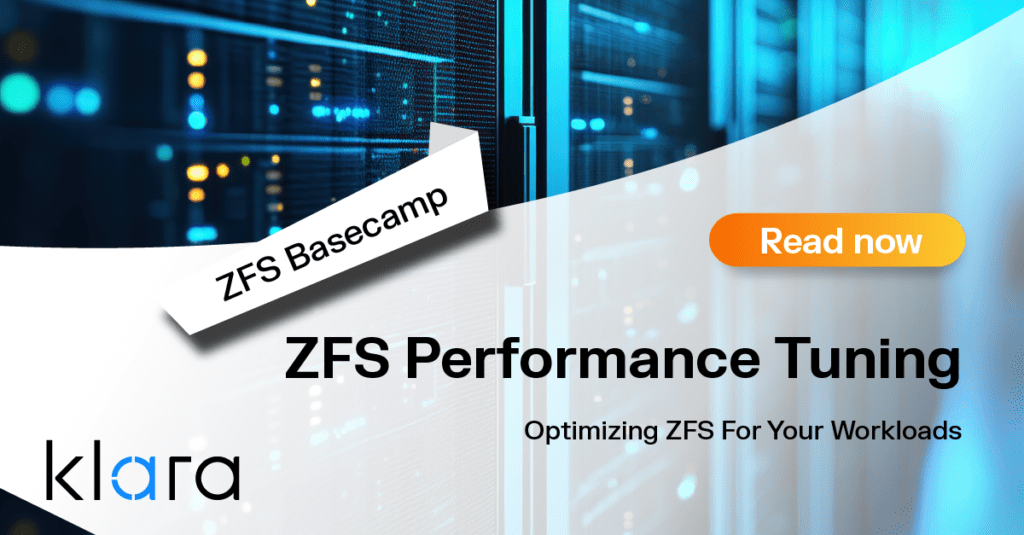ZFS in Virtualization: Storage Backend for the Pros

OpenZFS is already a powerhouse of reliability—but when it comes to virtualization, it truly shines. With features like checksumming, snapshots, and replication, plus smart hardware and topology guidance, this article explores how to get the best performance and endurance when using ZFS as a VM storage backend—from homelabs to datacenters.
ZFS Performance Tuning – Optimizing for your Workload

ZFS tuning is essential for optimizing performance based on your workload. This guide explores how to fine-tune key settings—like record size, caching strategies, and hardware choices—to maximize throughput, improve IOPS, and reduce latency in your ZFS storage environment.
Isolating Containers with ZFS and Linux Namespaces

Containers provide an efficient way to isolate workloads, but managing storage and resource separation can be challenging. This article explores how ZFS and Linux namespaces work together to optimize containerized environments, ensuring storage flexibility, workload isolation, and enhanced control. Learn how to leverage ZFS datasets and Linux namespaces for multi-tenant architectures while maintaining performance and security.
From 0 to Bhyve on FreeBSD 13.1

FreeBSD has its own high-performance hypervisor called “bhyve”. Much like the Linux kernel’s KVM hypervisor, bhyve enables the creation and maintenance of virtual machines—aka “guests”—which run at near-native speed alongside the host operating system. Although bhyve got a later start than Linux KVM, in most ways it has caught up with its primary rival—and in some ways surpassed it.





